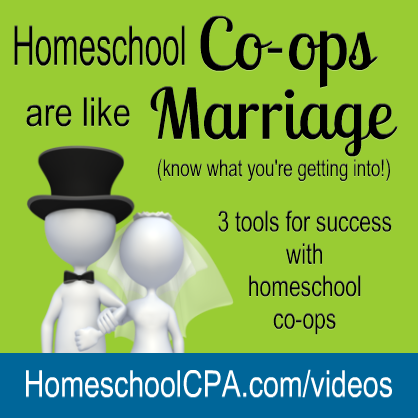
Many homeschool organizations file to become nonprofit corporations in their state and they are usually asked
Does your corporation have members?
Well, naturally most homeschool groups have members, so the answer is “Yes”, right?
Maybe not.
Read the question carefully. It asks if your corporation has members. Your group may have members, but not the corporation.
What’s the difference?
For-profit corporations have shareholders. These shareholders are entitled to a vote on matters brought to their attention. A nonprofit corporation may have members, but is not required to have members. If a nonprofit corporation has members, then those members are entitled to a vote on matters brought to them. Typically, this might be electing board members, approving the budget, choosing to hire paid staff, etc. (the bylaws usually spell out what members vote on).
Voting memberships are useful when an organization wishes to be democratically controlled by its constituents. Voting memberships structures are commonly used by member driven organizations such as social clubs, churches, chambers of commerce and trade associations. In such cases, the organization exists to serve its members and its makes sense for control to be vested in the members.
Source: https://charitylawyerblog.com/2011/04/26/nonprofit-law-jargon-buster-voting-members-vs-self-perpetuating-boards/
Some nonprofit corporations do not have members; instead decisions are made by the board. The members do not have a vote, nor do they elect board members. The board appoints replacement board members (it’s called self-perpetuating).
Many homeschool organizations may have members participating in their activities (co-op classes, field trips, clubs, etc), but not have voting members of the corporation. Instead, they have a board that makes the decisions.
Advantages of a board-run organization (i.e., no members of the corporation)
- A board-run homeschool group does not have to gather members together for a vote.
- Decisions can be made more quickly.
- A smaller group of people, the board, makes the decisions
Disadvantages of a board-run organization (i.e., no members of the corporation)
- No input from the members
- The board replaces itself and could become insular with no new ideas.
Should your homeschool nonprofit corporation have members?
Well, of course, that is up to you, but I believe that it is more cumbersome for most homeschool organizations to have voting members. Many homeschool organizations are run by a self-perpetuating board very successfully.
What if your Articles of Incorporation state you have members, but you want to change that?
You will have to amend the Articles of Incorporation. This will probably take a vote of the members. State law dictates who can change the form of the corporation. Start researching “amend nonprofit corporation and YOUR STATE” It usually involves holding a member meeting to change the Articles of Incorporation, filing some paperwork with your state and paying a small fee to your state (typically $30-$50).
Carol Topp, CPA

